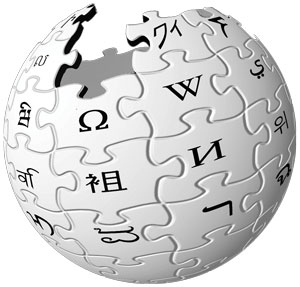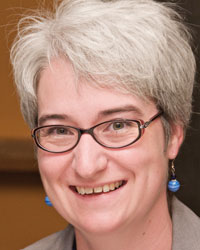Member Article
Improving Students’ Writing With Wikipedia
 Most students don’t like writing papers. Honestly, how many of us like grading papers? But to learn how to think critically, they need to learn how to ask questions, find good sources using the library’s abundant resources, read and understand journal articles, and write about those journal articles intelligently. In upper-level courses, we can add the task of developing a new research question, but I’ve found getting new psychology students to write excellent summaries is a good assignment. Good summaries are hard because they require excellent search and reading skills in addition to the ability to communicate about complicated material with style and grace.
Most students don’t like writing papers. Honestly, how many of us like grading papers? But to learn how to think critically, they need to learn how to ask questions, find good sources using the library’s abundant resources, read and understand journal articles, and write about those journal articles intelligently. In upper-level courses, we can add the task of developing a new research question, but I’ve found getting new psychology students to write excellent summaries is a good assignment. Good summaries are hard because they require excellent search and reading skills in addition to the ability to communicate about complicated material with style and grace.
I’ve always had my 200-level cognitive psychology students write a “literature review,” which includes learning how to use PsycINFO to find related articles on a cognitive topic of their choice and writing a 1,500-2,000 word description of the current understanding of that specific research area. Students had to turn in a list of six possible references to verify that their planned topic and journal articles were acceptable along with the PsycINFO records for all the articles. For the final product, I required that they write about four journal articles.
This assignment may be very familiar to instructors, and it is a good introduction to some of the research skills necessary for any kind of academic work. Realizing that the indexes provided by the library are different from free online search engines, and that a peer-reviewed journal article provides a different quality of information than a newspaper article or press release, are important first steps in learning how to do research.

Margaret Munger
When I read about the APS Wikipedia Initiative challenge to have students help correct Wikipedia, I thought it sounded like a really neat idea. To write a good Wikipedia article, the students need the same reading and research skills that my old assignment required, with the advantage of contributing to the public good. Davidson College’s mission statement declares our intent “to assist students in developing humane instincts and disciplined and creative minds for lives of leadership and service,” a sentiment shared by many colleges. I believe that careful and rigorous study of any discipline can support this, but there can be quite a distance between the classroom and the service for some of us. The Wikipedia Initiative changes that because part of civic engagement is providing accurate information to forums that are accessible to a larger community.
To learn about Wikipedia, I wrote an entry about the particular task I’ve been studying for years, representational momentum. Writing the article really helped me think through how this writing task was similar to and different from academic writing, and it confirmed for me that writing for Wikipedia would help students develop the reading and research skills that I wanted them to have. It also taught me that learning Wikipedia’s culture and markup were things that were simultaneously fun and daunting. I decided to structure my article, and the students’ assignment, to include sections equivalent to a typical journal article.
Writing a Wikipedia entry also taught me that I needed to include some smaller assignments to help the students learn about Wikipedia and markup. I used the Wikipedia Campus Ambassador syllabus to get an initial description, and here are the critical points I chose for course credit.
Students read Wikipedia’s Five Pillars, and we had a brief class discussion about whether or not they should register anonymously. I told them I had chosen to use my real name because I was doing this project to be part of a solution. The vast majority of my students registered with their full names or names related to their official college email.
I used three Fridays to work on Wikipedia in class. On the first day, students registered at Wikipedia and edited their new user pages to include some specific information, which meant they had to learn some markup. My own user page had all that they needed, and they could have simply copied my work, but I encouraged them to search for items so they could see how much documentation is available on Wikipedia markup. On that first day, they also registered at APS and added their name to the list of students on our Wikipedia course page, which meant they had to edit that page.
The second ‘Wikipedia day’ began with a visit from one of our librarians, who introduced the students to PsycINFO. Their task was to find a journal article about a topic from our cognitive textbook and add the reference using the cite menu journal template to their Wikipedia sandbox (a page under their user page where they can practice). The journal template for citations is very nice, though my students were unnerved by the difference between the textbox entry with the markup and the formatted preview.
I had students work in pairs on chosen articles because of the scale of what I wanted them to do, and because of the public nature of the final version. In writing my own Wikipedia entry, I had only 1,000 words, but I had 22 references. My students’ assignment was to find 15 articles to add. On the third and final,dedicated ‘Wikipedia day,’ I gave them class time to evaluate their current Wikipedia article and begin talking about how to improve it. When an article exists in Wikipedia, you’re supposed to propose your changes on the article’s talk page to let others who are interested comment on your plan. My students had to do this over the weekend, and then a first draft was due four weeks later.
When their first drafts were moved to the main space (posted publicly in Wikipedia), my students were assigned to peer review two of our edited articles. They were particularly good at letting fellow student editors know when definitions or organization were confusing. One thing I noticed was how different typical student writing was not only from APA style, but from Wikipedia’s style as well. A cosmetic difference is that Wikipedia uses endnotes instead of inserting author and date in the text, but a more interesting difference is the “headline” nature of the Wikipedia writing style. To write either way, you need to understand the research, and we talked about how they needed to tighten up their prose as they worked on their revisions. After receiving feedback from their peers and me, students had three weeks to produce their final version.
The Wikipedia syllabus includes two ways articles can be noticed within Wikipedia: “Did you know…” and “Good Article” status. “Did you know…” is a section on the home page of Wikipedia that lists new content once it has been checked by someone other than the author for proper citations and style. “Good Article” status involves a more thorough review, and once an article passes, a small green plus sign is added to the top right of the page. I included these nominations as part of my students’ assignment, but it turned out that most of my students’ work did not qualify for “Did you know…” because they were editing existing articles. The three that did were very excited, and had their moment of glory on the front page, along with thousands of page visits. Two of my students voluntarily nominated their articles for “Good Article” review, and it will be interesting to see if they follow through with the additional revisions, though this won’t affect their grade. I’m not going to include this part in future assignments because I want the focus to be on improving content, not only adding it.
Teaching students about Wikipedia in addition to cognitive psychology was certainly more work for me, but I’ll do it again because the students were excited about this writing assignment — not just polite or diligent, but excited. They were excited on the first day of class, and were still excited as they decided how to improve the articles and found new references. Many commented on how much it mattered that their work would be public, not just read by me for a grade. In fact, many told their families and friends to go read their articles. Being able to contribute to the public good was important to them, and they did this in addition to learning the first steps to doing scholarly research.





APS regularly opens certain online articles for discussion on our website. Effective February 2021, you must be a logged-in APS member to post comments. By posting a comment, you agree to our Community Guidelines and the display of your profile information, including your name and affiliation. Any opinions, findings, conclusions, or recommendations present in article comments are those of the writers and do not necessarily reflect the views of APS or the article’s author. For more information, please see our Community Guidelines.
Please login with your APS account to comment.